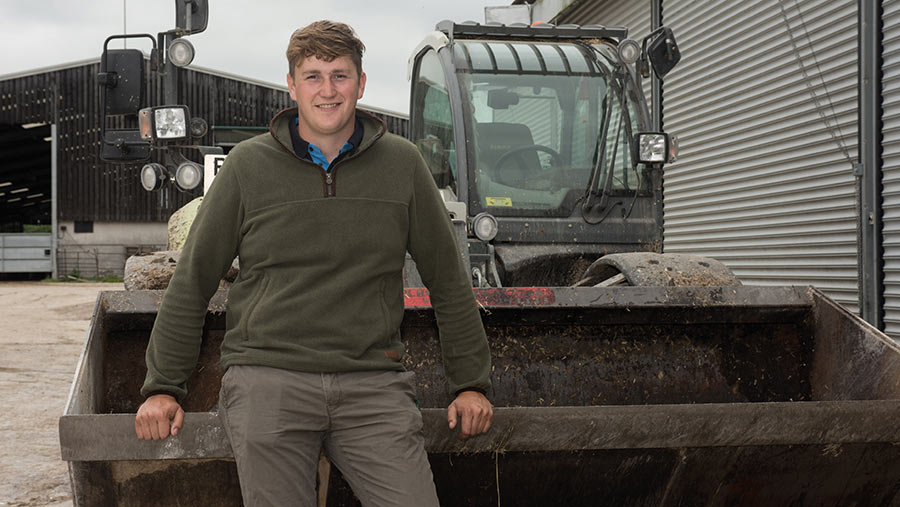Farmer Focus: Pea forage crop gives more business options
 © Hugh Nutt
© Hugh Nutt After a wet March, April seems to have brought some sunshine. Unfortunately, some crops have not fared well. The emerging spring barley is struggling in the wet ground.
The weather also meant we missed some windows for spreading slurry, especially on the wheat, which has been frustrating for fertiliser planning.
See also: Video: Sugar beet growers set for April rush to get crop drilled
Preparation for maize is now under way. I’m hoping to utilise a strip-till cultivator on a shallow disced seed-bed.
The idea is that the discs will incorporate the muck and give some more tilth. This will, hopefully, sort the few issues we had last year with slugs and cloddy seed-beds.
Elsewhere, we are preparing land for a pea and oat silage mixture that will fill a gap from last year’s forage shortage.
As a low-input crop with only slurry applied in the seed-bed, it will be interesting to see how well it performs.
It will be good to be growing more protein on farm for the dairy and, hopefully, reduce use of bought-in soya and rapemeal.
As with most livestock enterprises, we rely heavily on protein in the cows’ diets, and although we aim to maximise what we can from grass with the inclusion of clover, we still have a heavy reliance on bought-in protein.
Not only does this have environmental sustainability implications, but from a business point of view it means a heavy reliance on a bought-in commodity.
With the addition of more stewardship and Sustainable Farming Incentive options for reduced nitrogen fertiliser usage, it may increase the viability of this crop.
Our aim is to feed cows from our own home-grown feed, either as forage or grain. That doesn’t mean it will always be the case.
If feed can be bought more cost effectively, especially where UK-produced by-products are concerned, then we can do this.
But if we are able to meet the needs of the livestock on farm, it gives a good amount of business flexibility and sustainability.


